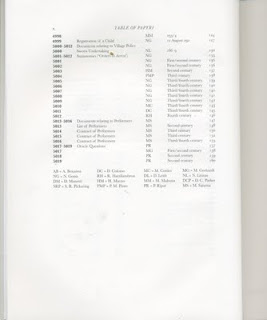P. VAN NUFFELN, Faces of Hellenism: Studies in the History of the Eastern Mediterranean (4th Century B.C. - 5th Century A.D.)
Faces of Hellenism Studies in the History of the Eastern Mediterranean (4th Century B.C. - 5th Century A.D.) Series: Editors: Van Nuffelen P. Summary: Collecting papers on historiography, papyrology, history, and material culture, this volume charts the changing faces of Hellenistic civilization from the fourth century B.C. to Late Antiquity. The Macedonian colonisation and the Roman conquest had an important impact on society, politics, and culture of the Eastern Mediterranean. The papers address issues such as bilingualism and the role of ‘invented traditions’ in Roman Egypt. They emphasise local differences within the Roman Empire, for example the difficult access inhabitants of Egypt had to Roman citizenship. Other contributions asses the perspective of the sources and how they reveal different facets of Hellenistic society. Drawing on approaches developed in the Section of Ancient History of the University of Leuven, the contributions pay homage to three retiring professors, L. Mooren, G. Schepens, and H. Hauben, who each in their different way have explored the changing faces of Hellenism for the past thirty years. Year: 2009 ISBN: 978-90-429-2273-0 Pages: X-342 p. Price: 62 EURO Source: Papy-L (W. Clarysse) |





